AWS Certified Developer - Associate
Security
ACM
In this lesson, we explore AWS Certificate Manager (ACM) and its pivotal role in enhancing web security. ACM simplifies the management of SSL/TLS certificates and strengthens your online presence by automating certificate provisioning, deployment, and renewal.
Before diving deeper into ACM, it helps to understand what a digital certificate is. A digital certificate is a data file used to validate the identity of a website, server, application, or individual. It encapsulates details like the entity’s name, public key, expiration date, and the digital signature from a trusted Certificate Authority (CA). Essentially, the certificate confirms that when you connect to a domain—say, google.com—you are indeed communicating with the legitimate site rather than an imposter.
Digital certificates offer several key benefits:
- Authentication: Verifies the identity of communicating parties.
- Data Encryption: Secures data transmission through HTTPS.
- Data Integrity: Protects information from tampering during transit by validating the digital signature.
- Trust: Issued only after a stringent verification process by trusted authorities.
- Compliance: Meets industry standards for protecting sensitive data.
![]()
What is AWS Certificate Manager?
AWS Certificate Manager is a comprehensive service that helps you maintain a secure web presence using TLS. It automates the generation of SSL/TLS certificates for services like Elastic Load Balancer, Amazon CloudFront, and Amazon API Gateway, among other AWS-integrated services.
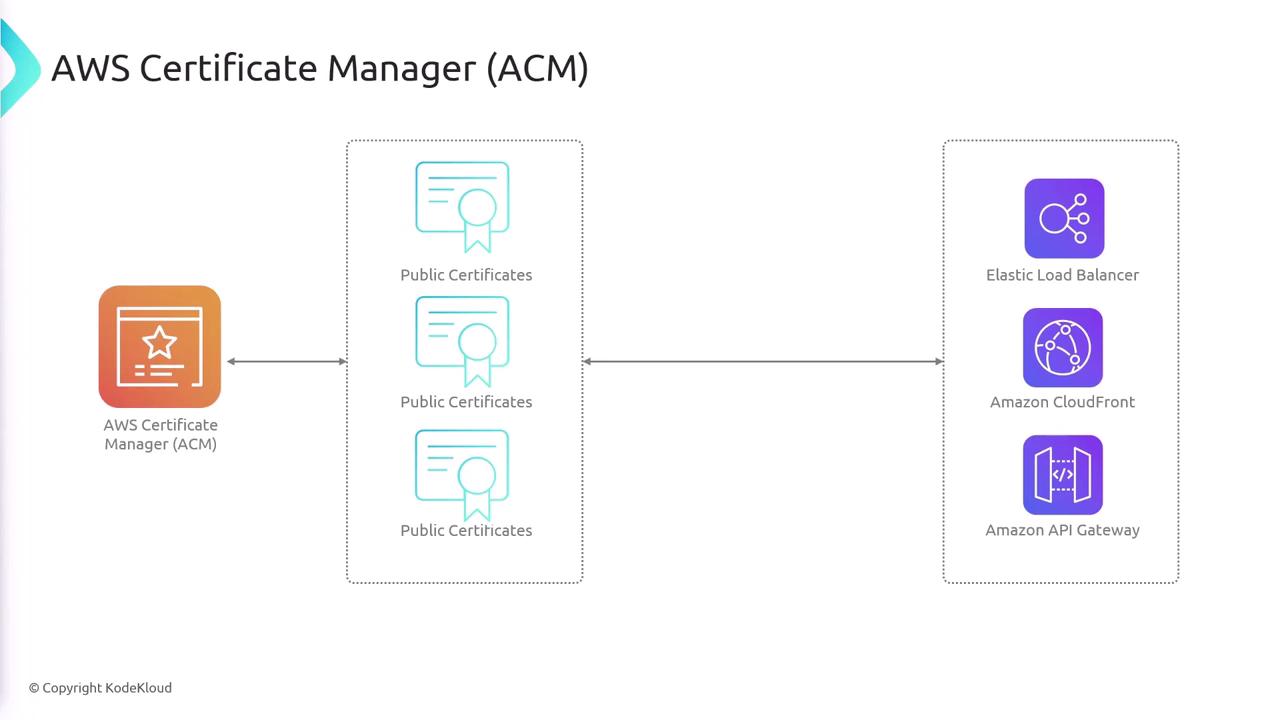
ACM not only simplifies certificate creation but also handles deployment and automated renewals. This seamless process eliminates manual steps, reducing the risk of misconfigurations.
Key Features of AWS Certificate Manager
- Automated Certificate Provisioning: Generates SSL/TLS certificates without manual intervention.
- Automatic Renewal: Ensures continuous security by managing renewals before expiration.
- Seamless Deployment: Integrates directly with AWS services, reducing configuration errors.
- Centralized Management: Offers a unified console to manage all your certificates.
- AWS Integration: Works natively across various AWS services for streamlined operations.
![]()
Tip
Automating certificate management not only simplifies your workflow but also enhances your application’s overall security posture.
Workflow of Using AWS Certificate Manager
Imagine an application load balancer exposed to the public. To secure user connections, follow these steps:
- Access AWS Certificate Manager.
- Provision a new certificate.
- Assign the certificate to your load balancer.
Once the certificate is in place, users connect securely via HTTPS to the load balancer. The load balancer may then communicate with backend instances (such as EC2) over HTTP. Although HTTPS between the load balancer and backend servers is possible, this communication typically remains within the secure confines of AWS.
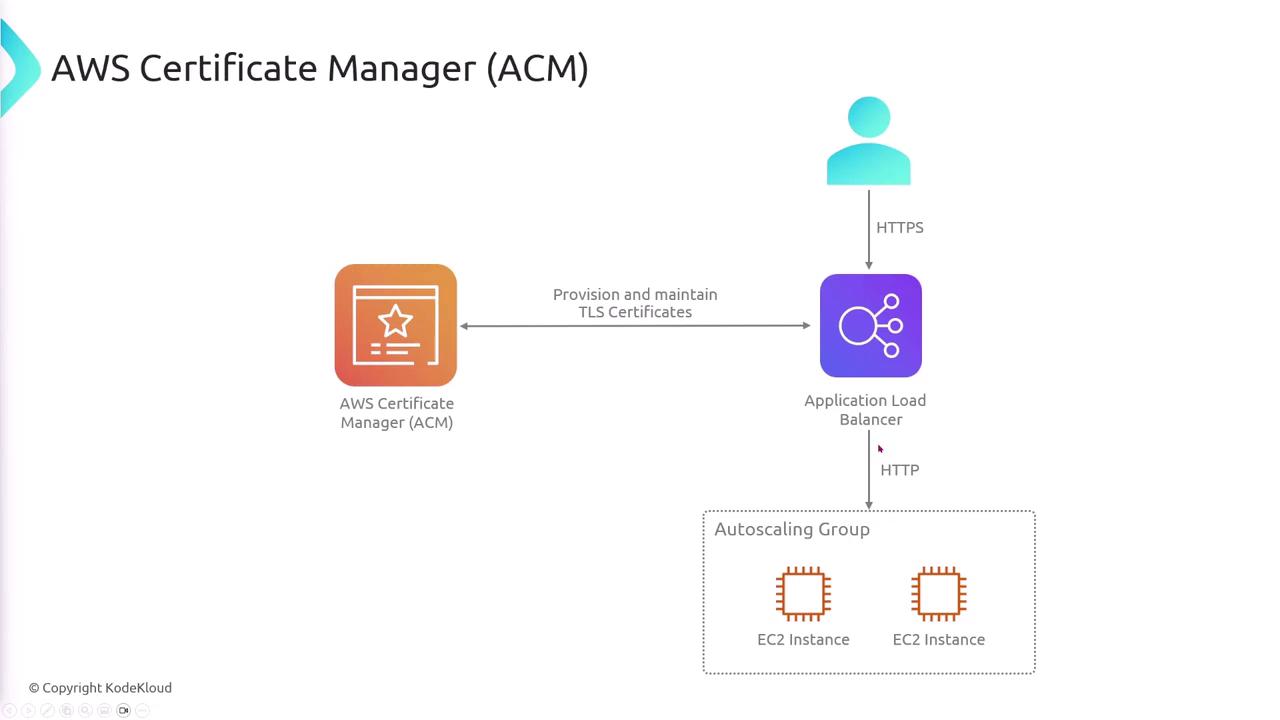
Supported AWS Services and Regional Considerations
AWS Certificate Manager integrates with several AWS services to secure your web applications. It supports:
- Elastic Load Balancer
- Amazon CloudFront
- Amazon API Gateway
However, it is not directly compatible with services like EC2, S3, or Lambda.
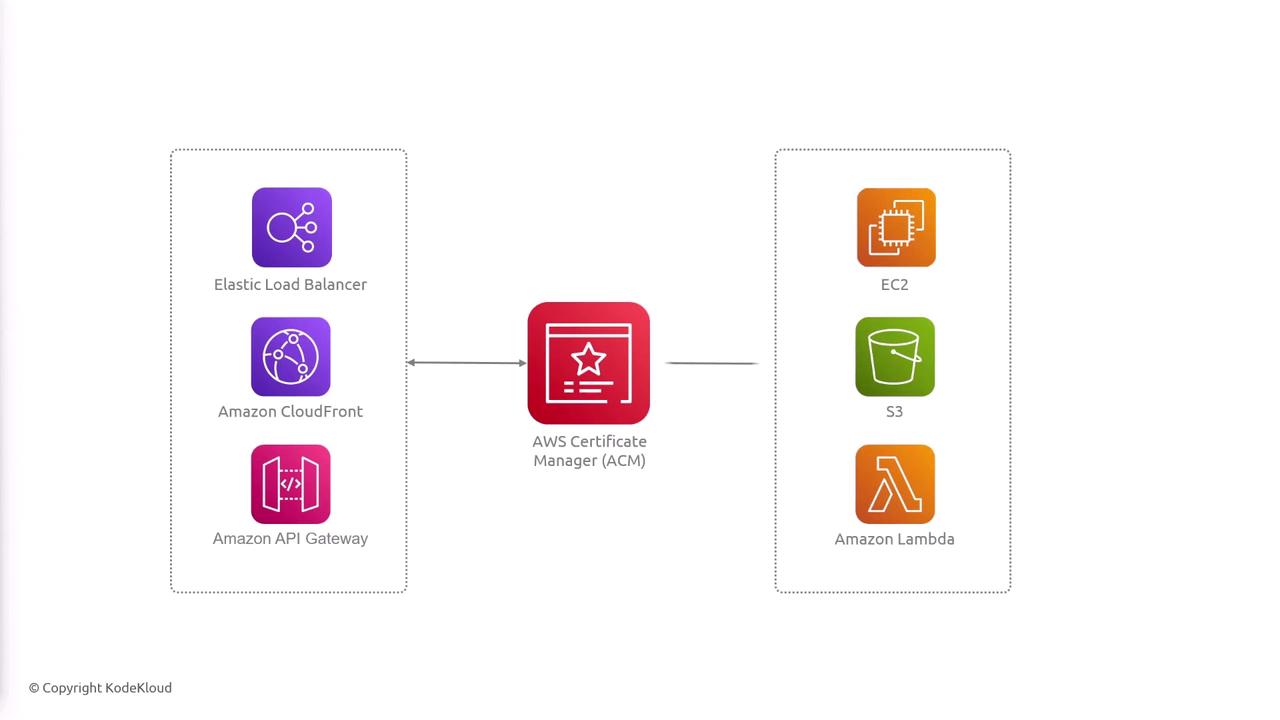
ACM is a regional service. This means certificates must be requested in the same region as the resource they will secure. For instance, a certificate for an AWS resource in US East 1 must be provisioned in US East 1. Global services like CloudFront require certificates from US East 1.
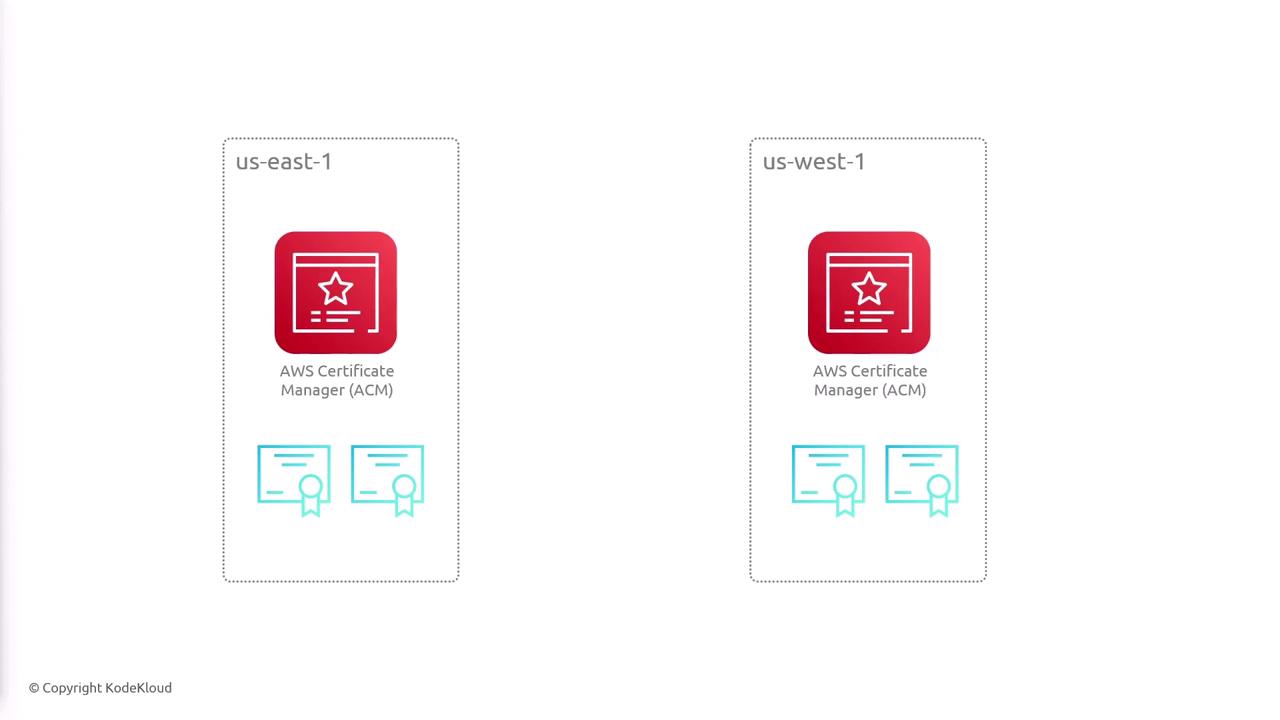
Steps for Working with ACM
- Request a Certificate: Start by submitting a certificate request in AWS Certificate Manager.
- Domain Ownership Verification: Validate your domain using email validation, DNS validation, or by adding specific DNS records to your domain configuration.
- Certificate Issuance: After successful verification, ACM issues the certificate.
- Automatic Renewal: ACM autonomously manages certificate renewals prior to expiration.
- Integration with AWS Services: Attach the certificate to your target AWS service, such as Elastic Load Balancer or CloudFront.
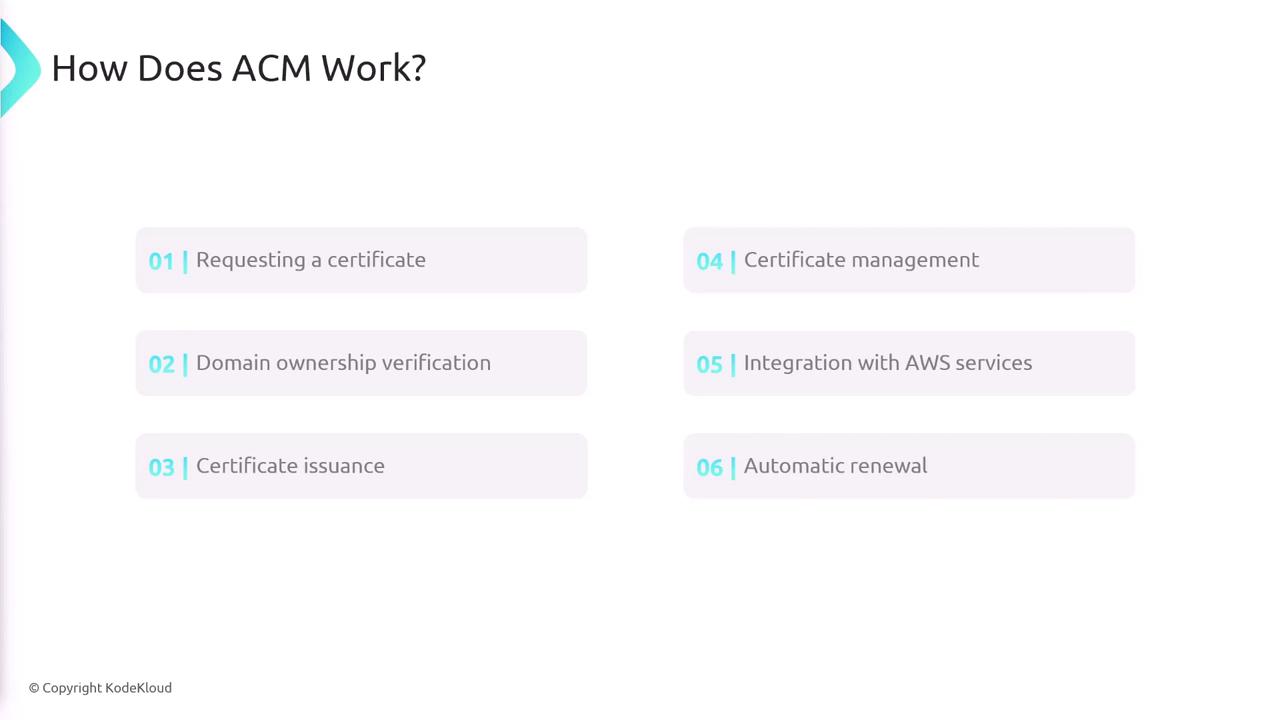
Reminder
Always verify that certificates are provisioned in the same region as your resources. For global distributions like CloudFront, remember to use certificates from US East 1.
Summary
AWS Certificate Manager streamlines the provisioning, deployment, and management of SSL/TLS certificates, ensuring your web applications remain secure and compliant. By automating renewals and integrating tightly with AWS services, ACM fosters a robust and efficient security environment. Always ensure that certificates are generated in the appropriate region for your AWS resources, with the primary goal of maintaining secure, user-friendly connections.
For more detailed information on managing your web security, explore the AWS Documentation.
Watch Video
Watch video content